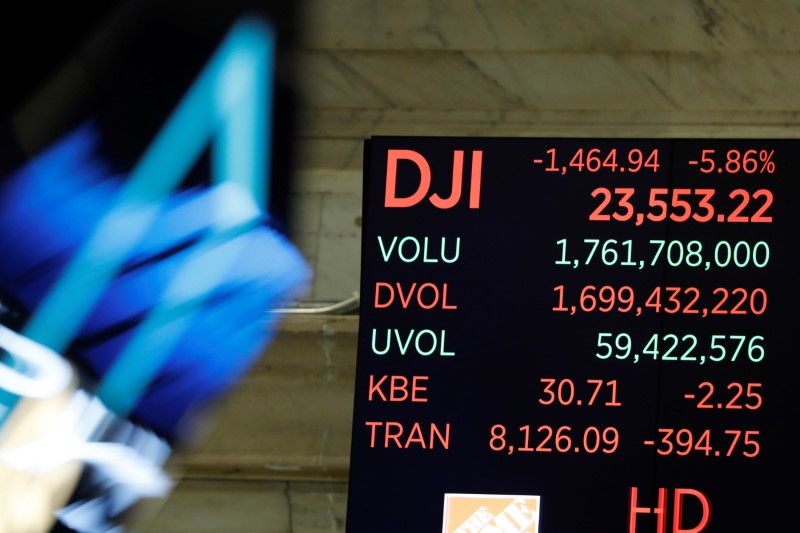This post was originally published on this site
https://i-invdn-com.akamaized.net/trkd-images/LYNXMPEG2H26X_L.jpg © Reuters. The Dow Jones Industrial Average is displayed after the closing bell on the floor of the New York Stock Exchange (NYSE) in New York City
© Reuters. The Dow Jones Industrial Average is displayed after the closing bell on the floor of the New York Stock Exchange (NYSE) in New York CityBy Noel Randewich
(Reuters) – As Wall Street extended its deep sell-off on Friday over fears about the coronavirus, the Dow Jones Industrial Average erased the last of the once sizeable gains it made under U.S. President Donald Trump.
Trump’s request for Congress to approve $500 billion in cash payments to taxpayers along with $50 billion in loans for airlines failed to stem the bleeding in the stock market, where the Dow Jones Industrial Average () tumbled more than 10%.
Trump has repeatedly boasted about and taken credit for the stock market’s performance during his three years in office, including as recently as last Saturday after a strong rebound the day before. Trump has also warned that Wall Street would fall if a Democratic candidate wins the November presidential election.
Wednesday’s drop left the Dow 3% lower than where it was on Jan. 20, 2017, the day of Trump’s inauguration. The Dow is still up 5% from when Trump unexpectedly won the presidential election on Nov. 8, 2016.
Measuring the stock market’s performance under the Republican President beginning at his election date captures a surge immediately after he won, dubbed the Trump Bump, as investors became optimistic about Trump’s promises to cut taxes and reduce regulations.
At its February peak, the Dow had surged more than 60% from Trump’s election day.
The , a broader measure of the U.S. stock market, tumbled more than 9% on Wednesday, leaving it up just 8% since Trump’s 2016 election and up 2% from his inauguration. At its peak, the S&P 500 had gained 58% since Trump’s election.
Overall, the S&P 500 has slumped more than 30% from its Feb 19 peak and ended a bull market that began in 2009.
Fusion Media or anyone involved with Fusion Media will not accept any liability for loss or damage as a result of reliance on the information including data, quotes, charts and buy/sell signals contained within this website. Please be fully informed regarding the risks and costs associated with trading the financial markets, it is one of the riskiest investment forms possible.

